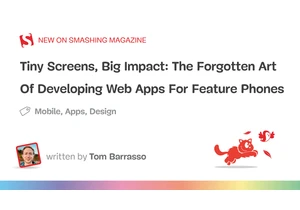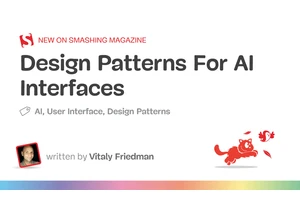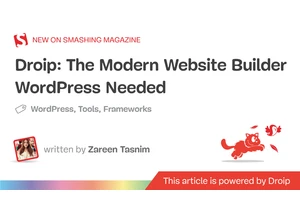Designers love to craft, but polishing pixels before the problem is solved is a time-sink. This article pinpoints the five traps that lure us into premature detail — being afraid to show rough work, fixing symptoms instead of causes, solving the wrong problem, drowning in unactionable feedback, and plain fatigue — then hands you a four-step rescue plan to refocus on goals, ship faster, and keep your craft where it counts. https://smashingmagazine.com/2025/06/why-designers-get-stuck-in-details/
Zaloguj się, aby dodać komentarz
Inne posty w tej grupie

Ensuring your product communicates clearly to a global audience is not just about localisation. Even for products that have a proper localisation process, English often remains the default language fo

Learn why flip phones still matter in 2025, and how you can build and launch web apps for these tiny devices. https://smashingmagazine.com/2025/07/tiny-screens-big-impact-developing-web-apps-feature-p

Designing a new AI feature? Where do you even begin? From first steps to design flows and interactions, here’s a simple, systematic approach to building AI experiences that stick. https://smashingmaga

The Wizard of Oz method is a proven UX research tool that simulates real interactions to uncover authentic user behavior. Victor Yocco unpacks the core principles of the WOZ method, explores advanced

Traditional page builders have shaped how we build WordPress sites for years. Let’s take a closer look at Droip, a modern, no-code visual builder, and explore how it redefines th

As always in design, timing matters, and so do timely notifications. Let’s explore how we might improve the notifications UX. More design patterns in our <a href="https://smart-interface-design-patter

CSS has evolved from a purely presentational language into one with growing logical powers — thanks to features like container queries, relational pseudo-classes, and the if() function. Is it still
